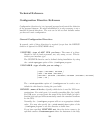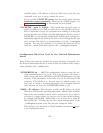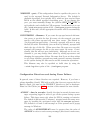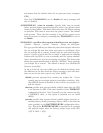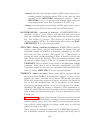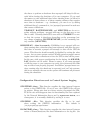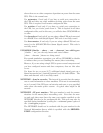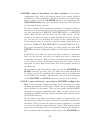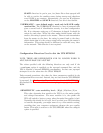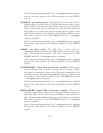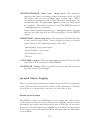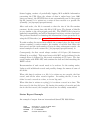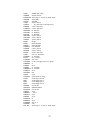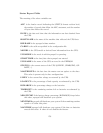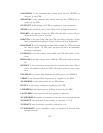MASTER <name of the master> for slave machines. Used in slave
configuration files, this is the network name of the master which is
authorized to send commands to this slave. In all cases (of which I am
aware), when you specify a MASTER directive, you will also specify
UPSCABLE ether since your information about the UPS will come
via the network from a master.
The slave machine will be shutdown whichever occurs first: either at
the request of the master when it does a shutdown or when the values
you have specified for TIMEOUT, BATTERYLEVEL, or MINUTES
expire (these should work but have not been fully tested). Conse-
quently, if you want the slaves to begin shutting down before the mas-
ter, you can do so by adjusting the values in the configuration file.
If you want the slave to remain up until the master shuts down, you
should set TIMEOUT, BATTERYLEVEL, and MINUTES all to zero.
For proper functioning of the slave, you must specify the same UP-
STYPE in the slave configuration file as is in the master configuration
file.
It should be noted that the master and slaves continue to communi-
cate over the network even after the master has issued a shutdown
command to the slaves. This is because the master apcupsd continues
to run until it receives the shutdown signal from the system. This is
important to ensure that all the slaves have been properly notified of
the shutdown.
We recommend that the machine names used on the MASTER and
SLAVE directives be put in your /etc/hosts file so that apcupsd will
be able to resolve the machine name during startup and shutdown
even if DNS is not running. Alternatively, you can use IP addresses
on the MASTER and SLAVE directives, but this is less flexible.
SLAVE <name of slave(s)> used only in MASTER configuration
files. Used in master configuration files, this is the name of a slave
machine that depends on this master. There can be a maximum of 20
slaves attached to one master. Thus you can specify multiple SLAVE
directives in a master configuration file. Only one slave name can be
specified per SLAVE directive, thus for multiple slaves, specify multi-
ple SLAVE directives.
As noted above the master and slaves continue to communicate over
the network even after the master has issued a shutdown command to
the slaves. This is because the master apcupsd continues to run until
it receives the shutdown signal from the system. This is important to
ensure that all the slaves have been properly notified of the shutdown.
We recommend that the machine names used on the MASTER and
172



